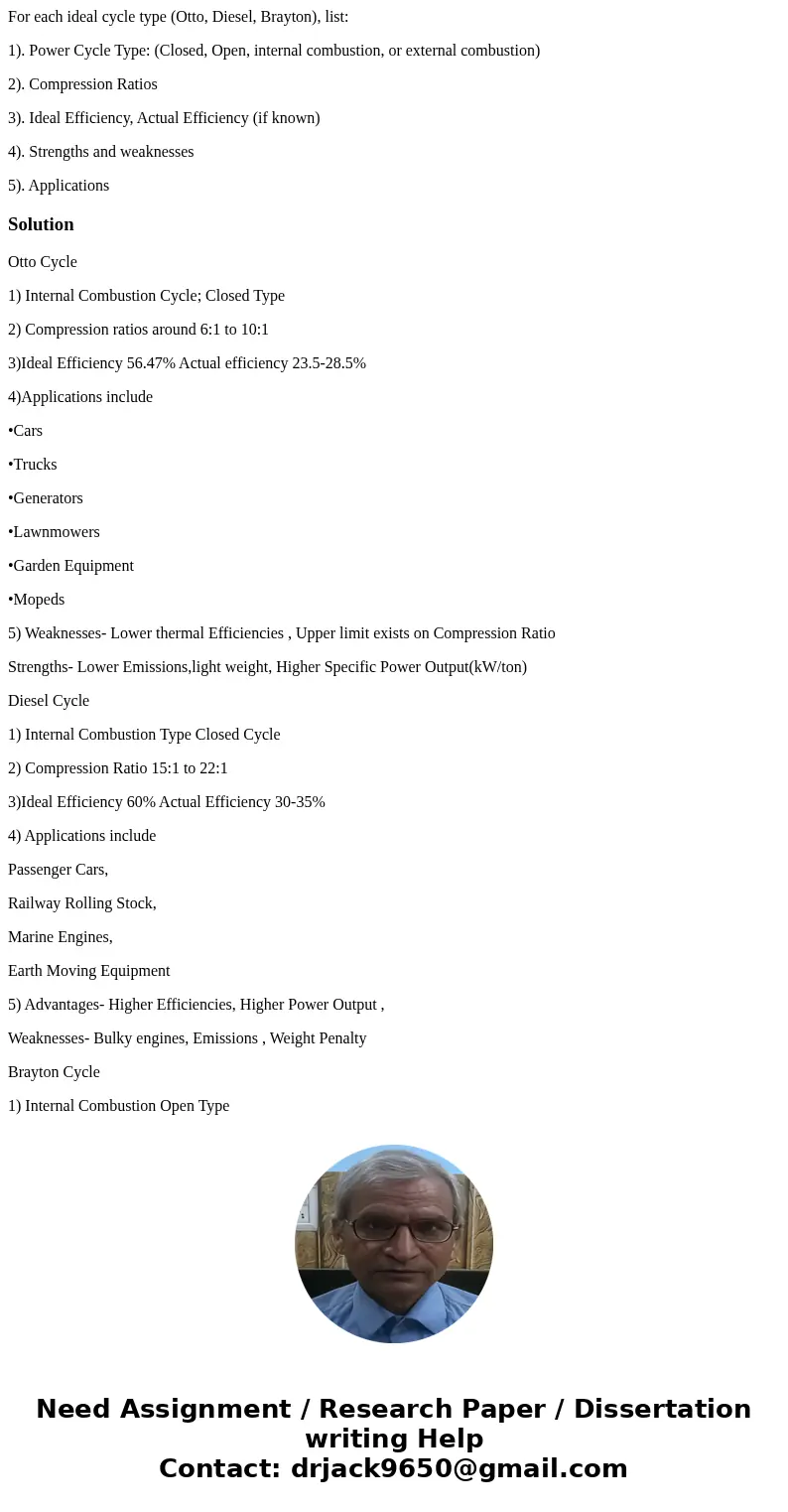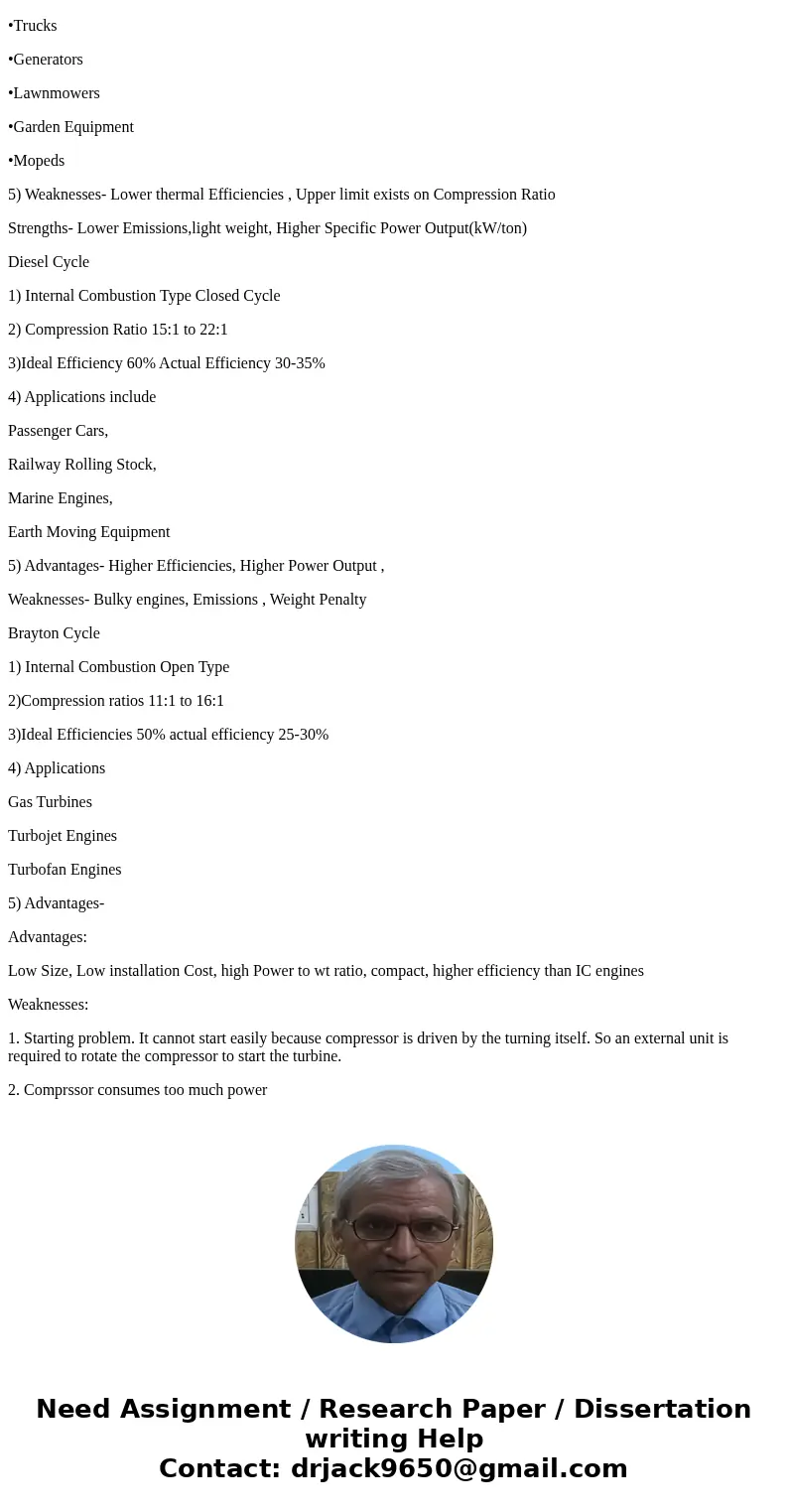For each ideal cycle type Otto Diesel Brayton list 1 Power C
For each ideal cycle type (Otto, Diesel, Brayton), list:
1). Power Cycle Type: (Closed, Open, internal combustion, or external combustion)
2). Compression Ratios
3). Ideal Efficiency, Actual Efficiency (if known)
4). Strengths and weaknesses
5). Applications
Solution
Otto Cycle
1) Internal Combustion Cycle; Closed Type
2) Compression ratios around 6:1 to 10:1
3)Ideal Efficiency 56.47% Actual efficiency 23.5-28.5%
4)Applications include
•Cars
•Trucks
•Generators
•Lawnmowers
•Garden Equipment
•Mopeds
5) Weaknesses- Lower thermal Efficiencies , Upper limit exists on Compression Ratio
Strengths- Lower Emissions,light weight, Higher Specific Power Output(kW/ton)
Diesel Cycle
1) Internal Combustion Type Closed Cycle
2) Compression Ratio 15:1 to 22:1
3)Ideal Efficiency 60% Actual Efficiency 30-35%
4) Applications include
Passenger Cars,
Railway Rolling Stock,
Marine Engines,
Earth Moving Equipment
5) Advantages- Higher Efficiencies, Higher Power Output ,
Weaknesses- Bulky engines, Emissions , Weight Penalty
Brayton Cycle
1) Internal Combustion Open Type
2)Compression ratios 11:1 to 16:1
3)Ideal Efficiencies 50% actual efficiency 25-30%
4) Applications
Gas Turbines
Turbojet Engines
Turbofan Engines
5) Advantages-
Advantages:
Low Size, Low installation Cost, high Power to wt ratio, compact, higher efficiency than IC engines
Weaknesses:
1. Starting problem. It cannot start easily because compressor is driven by the turning itself. So an external unit is required to rotate the compressor to start the turbine.
2. Comprssor consumes too much power


 Homework Sourse
Homework Sourse